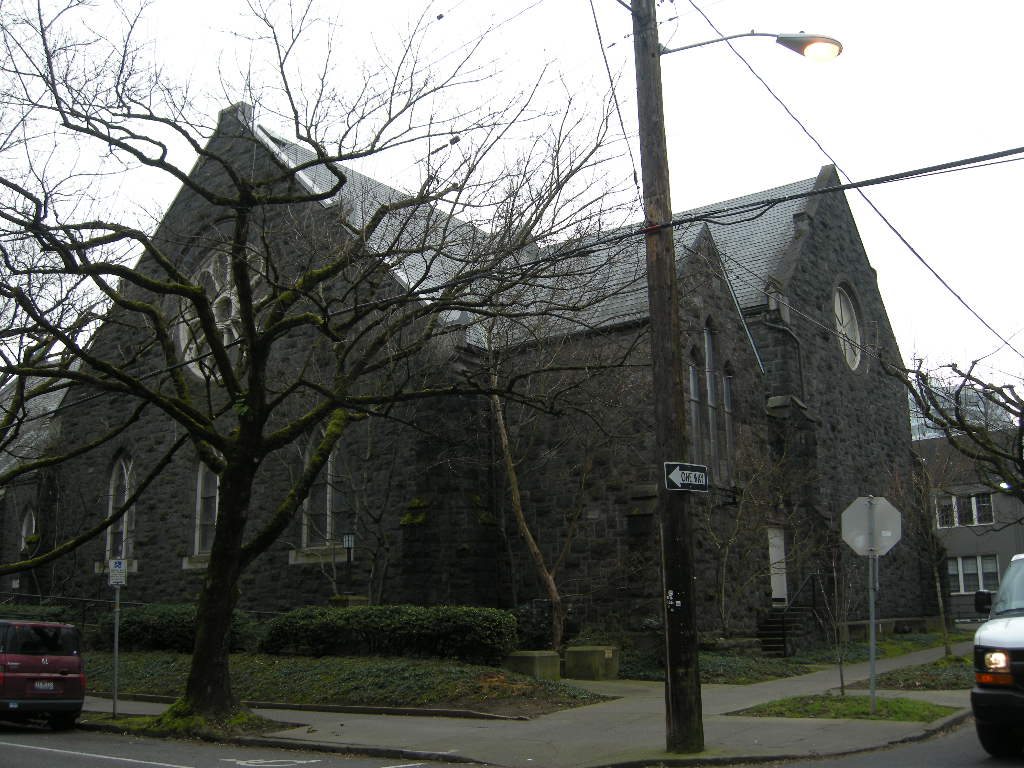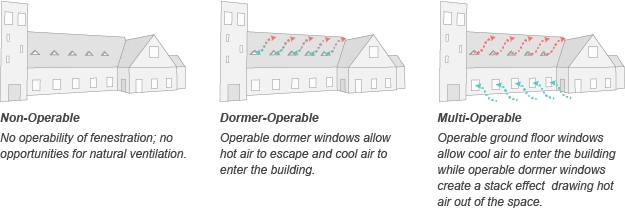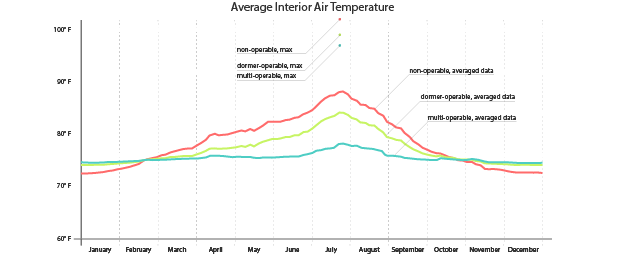
The terms ‘Sustainability’, ‘Green Building’, ‘Environmental Design’, and other similar phrases have recently become critical in how we approach and understand contemporary architecture. As concerns over pollution, global warming, and our impact on the surrounding environment have gained traction – we have begun to understand the building industry’s contribution to these issues. The US Green Building Council reports that buildings account for 39% of all carbon emissions in the United States, surpassing both industry and transportation.
At the core of the issue is how architects, clients, and the public imagine buildings should function and operate; a vision which has transformed over the last two centuries as technological advances have developed the capabilities of the building industry. In the last two centuries, buildings have become monuments to the Industrial and Technological Revolutions. The development of electrification, central heating, air conditioning, steel and concrete have transformed how architects design and how users function within the built environment. This shift has transformed architecture from an inherently sustainable practice into a much more complex and often unresponsive process.
While the phrase ‘sustainability’ has only recently been associated with architecture, many historic buildings were designed by incorporating sustainable practices. Without electricity, buildings by necessity had to respond to site orientation and the local climate. Natural ventilation was used to passively cool buildings, well placed windows provided natural light, and construction methods varied by location to provide an appropriate level of protection from the surrounding environment. However, as a result of modern renovations, these sustainable attributes are not always utilized to their fullest potential.
Historically, large, operable windows were an integral component of architecture in moderate climates like the Pacific Northwest. The glazing provided natural daylight while the operability allowed users to ventilate spaces based on thermal comfort. Today, the operability of windows in many historic buildings has been compromised for a variety of reasons:
• Windows that have been fixed shut to prevent users from overriding the central air system.
• Broken window hardware that hasn’t been properly maintained.
• Windows that have been painted shut.
• Windows that have been fixed shut to minimize maintenance.
Without the natural ventilation that was incorporated into the original design, these historic structures often overheat and/or rely heavily on central air conditioning. One must question why the inherent sustainability of these historic structures was compromised. Was it simply our initial infatuation with mechanical heating/cooling systems? As passive sustainable design gains traction it is critical that we understand the capabilities of historic structures in regards to their inherent sustainability.
For further investigation we have identified a case study that explores the possible impact reintegrating natural ventilation may have on thermal comfort. Trinity Episcopal Cathedral in Portland, Oregon was built in 1906 and the original design included 10 operable dormers along the Sanctuary roof. The dormers have since been boarded over, preventing rising heat from escaping. Congregants find the space overheated during the summer months and one must question whether operable dormers would provide adequate ventilation to sufficiently cool the space.
An energy model has been developed using OpenStudio and EnergyPlus to compare the thermal comfort of occupants within the space. A baseline model mimics the existing conditions and provides a comparison for the two different natural ventilation configurations. One natural ventilation configuration re-introduces the operable roof dormers to vent hot rising air. The other natural ventilation configuration re-introduces the operable roof dormers and integrates additional ventilation at the exterior wall of the building to produce stack ventilation.

While the project is still in process, initial results indicate that natural ventilation could have a significant impact on the space. The study has focused on the thermal comfort within the Sanctuary and results show that natural ventilation could dramatically lower indoor temperatures during peak summer months.


The results continue to be fine-tuned, and further refinement of the energy model will include:
• Adjusting schedules/systems to more closely reflect the building’s occupancy.
• More accurately defining the exterior infiltration rates.
• Exploring more relevant solutions for integrating stack ventilation that don’t require the large operable exterior windows. For example integrating ventilation through the basement into the main sanctuary.
While further research remains to be done, initial results are promising and demonstrate the inherent sustainability of the structure. While each building is unique, this Case Study shows how reintegration of natural ventilation may be a viable solution for passive cooling in uncomfortably warm historic buildings. Continue to check back for updates as we refine our study and explore how re-integration of natural ventilation may result in energy savings!
Written by Halla Hoffer, Architect I
